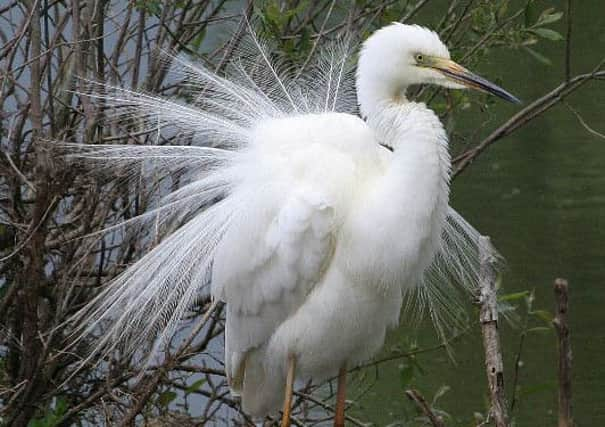Birdwatch: Chance for great white cousin to call this island its home


Several of these magnificent all-white herons have been seen in the region over the past week, two flying up the Yorkshire coast past Spurn and Filey and others in South and West Yorkshire.
Before they first bred here in 1996 little egrets were mainly seen in autumn as young birds dispersed from breeding colonies in France and the same thing looks to be happening with great white egrets.
Advertisement
Hide AdAdvertisement
Hide AdThey probably come here from the Netherlands where more than 2,000 now spend the winter and they first bred in 1978.
The first two pairs bred in this country in Somerset in 2012 and around 35 are recorded here each winter.
Great white egrets seem likely to become more widespread both as winter visitors and breeders, especially as more reedbeds are created and expanded to accommodate bitterns.
Although similar in appearance to the little, the great white egret is substantially larger, standing slightly taller than a grey heron and with a long snake-like, kinky neck.
Advertisement
Hide AdAdvertisement
Hide AdIt has all-black legs compared with the little egret’s black legs and yellow feet and a yellow or grey beak compared with the little egret’s black.
A third member of the family, the cattle egret, has also been seen in several places across England over the past week or two.
The cattle egret is shorter legged and more squat in appearance than the little and has a yellow beak and yellow or greyish legs.
It is often seen with livestock grabbing insects or worms disturbed by their hooves.
Advertisement
Hide AdAdvertisement
Hide AdA pair nested in Somerset in 2008 and, like the great white, the cattle egret is predicted to become a regular breeding bird here in future.
Yellow-browed warblers are still being seen along the coast after last week’s exceptional arrival on September 14 in which 139 were recorded at Flamborough and 34 at Filey. Many more must have gone through unnoticed.
A female red-backed shrike at the Old Tip and the first firecrest of the autumn were among other sightings at Filey.
At Spurn National Nature Reserve there have been excellent views of two jack snipe from the Canal Scrape Hide including the curious bobbing movements of these small elusive waders as they probe in the mud for food.
Advertisement
Hide AdAdvertisement
Hide AdOspreys have been seen in several places including at Potteric Carr Nature Reserve in Doncaster, two over Fairburn Ings and others at Swillington Ings and Hatfield Moors.
A tundra bean goose was seen at Hatfield Moors, South Yorkshire and a taiga bean good at Thornwick Bay, Flamborough, both with flocks of greylag geese.
More pink-footed geese have also been arriving back on the Humber.